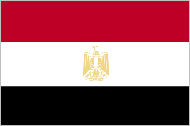Overview
Egypt,
commonly known as “The Motherland of the World”, “Land of Civilizations” and “The Greatest Power in
Human History”, is reputed worldwide for its distinct 7,000-year-old
record of civilization and immense wealth of knowledge. Through those
thousands of years, an amalgam of rulers influenced the evolution of the
nation, making Egypt a master
and pioneer of science, arts, culture, architecture as well as almost
all fields of human knowledge.
In today’s 21st century, Egypt
reflects a nation of international influences. It is commonplace to see
steel, glass, and stone being used for mud-brick homes, people wearing
designer clothing, and donkey-drawn carts competing side by side with
automobiles. One might ask,
where does IT come into play in modern
Egypt
and what are its implications?
Through this paper, we will address that very question.
This paper provides as a national IT assessment of
Egypt
and describes the implications for global organization.
The following factors were used during the analysis: Network
Access, Network Learning, Network Society, Network Economy, Network
Policy, and Offshore Opportunities.

Egypt
Demographics
|
The Arab Republic of Egypt is located in the north-eastern
corner of Africa and south-western Asia.
It is bounded on the north by the Mediterranean Sea, on the east
by Palestine and Israel,
on the south by Sudan,
and on the west by
Libya.
|
Population:
Capital
City:
Language:
Government:
Total Area:
|
76.5 million (est. 2006)
Cairo
- largest population
growth
Arabic
Democracy
1,001, 450 sq km.
Just over 3 times larger than New Mexico.
|
50 feet below sea level.
The highest point is Catharine Mountain
that is 8,668 feet high. The lowest point is
Qattara Depression and is 436 feet below sea level.
The Nile Delta, shaped like a triangle, stretches to 100 miles long and
155 miles wide.
The weather throughout Egypt consists
of warm to hot days followed by cool nights.
There are only two seasons. Winters are mild (November to April).
Summers are hot (May to October).
[1]
 Egypt - Readiness for
the Networked World
Egypt - Readiness for
the Networked World
